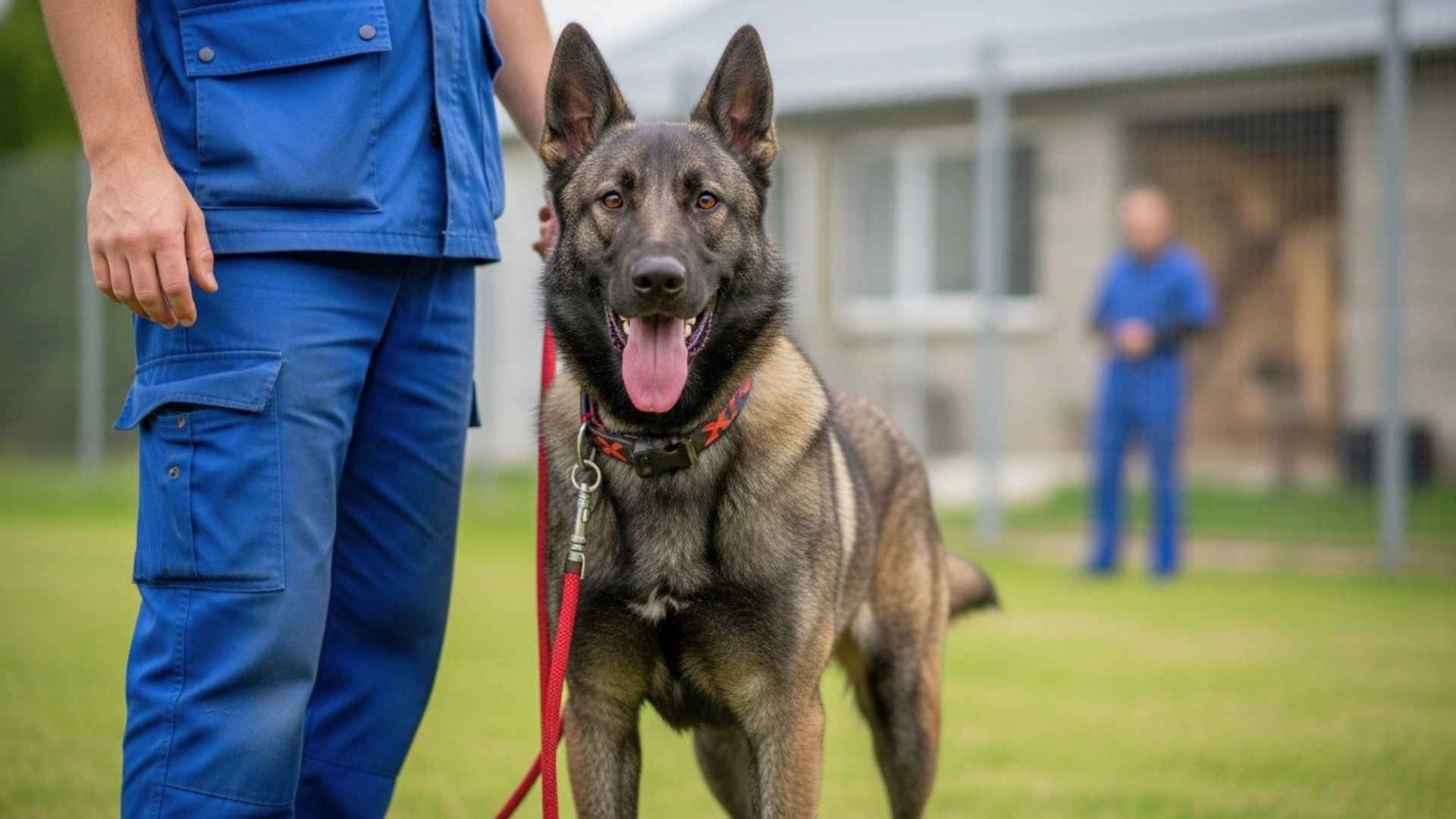Every day inside shelters, staff juggle countless challenges—mismatched resources, a tidal wave of intakes, and the silent strain of protecting both people and the animals in their care.
Did you know that according to ASPCA, in 2024, roughly 5.8 million dogs and cats entered shelters across the U.S., and around 2 million dogs were adopted, but a staggering 334,000 were euthanized?
That number isn’t just a statistic. It’s the unheard stories of hardworking shelter teams, desperate to make safe environments where staff can maybe spare a second for planning, training, or even sneaking in a moment of calm.
When you’re caring for anxious animals and stretched-thin teams, having a dog seen as a natural steward—a calm, vigilant protector—can shift everything.
Staff often pick up on protective instincts in dogs that quietly light up a different kind of confidence and calm. Those instincts—for safety, for presence—don’t come from bold declarations, but from a deeply rooted, alert kind of awareness.
Best Guard Dog Breeds For Animal Shelter Staff
Here are the 7 protective dog breeds:
1. Bullmastiff
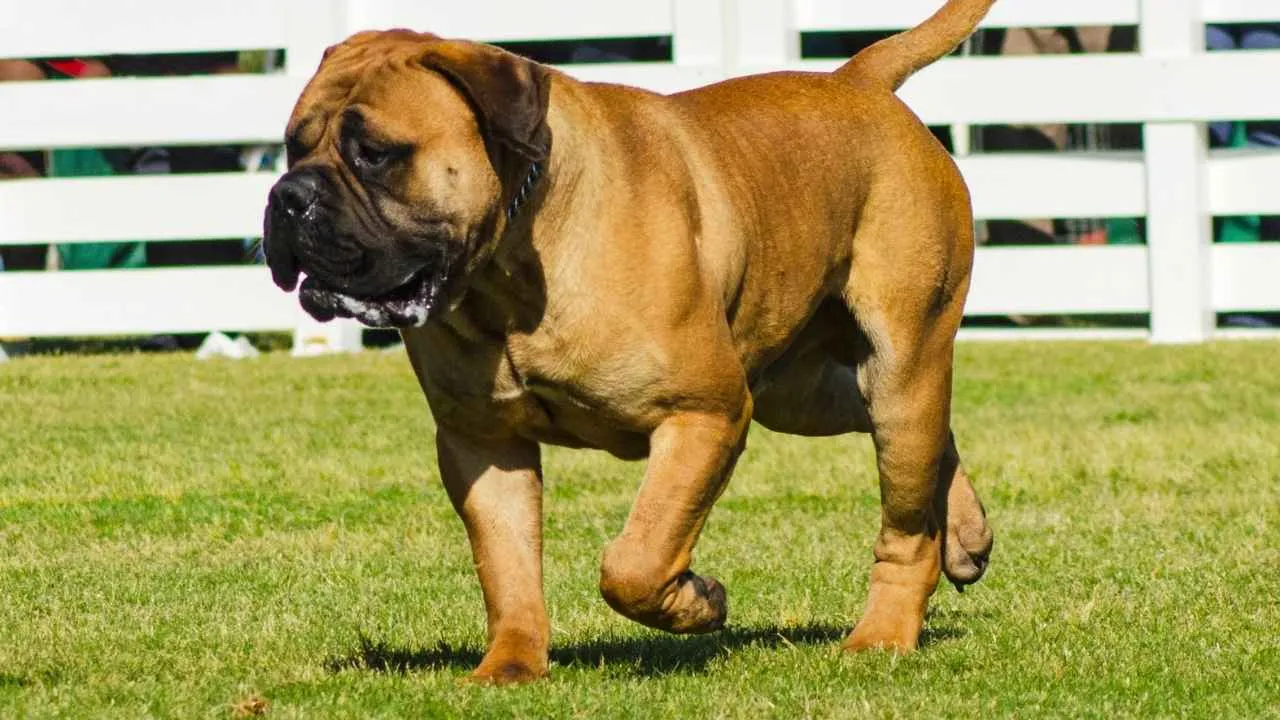
When it comes to the best guard dog breeds for animal shelter staff, the Bullmastiff stands out for its balanced presence. Shelter teams often face high-energy environments, but this breed’s calm vigilance provides a steadying influence.
According to WebMD, with a naturally watchful temperament, the Bullmastiff doesn’t just rely on muscle; it’s about controlled confidence. For staff moving between kennels or handling unpredictable situations with other dogs, having such a composed yet alert companion can create a sense of security without unnecessary tension.
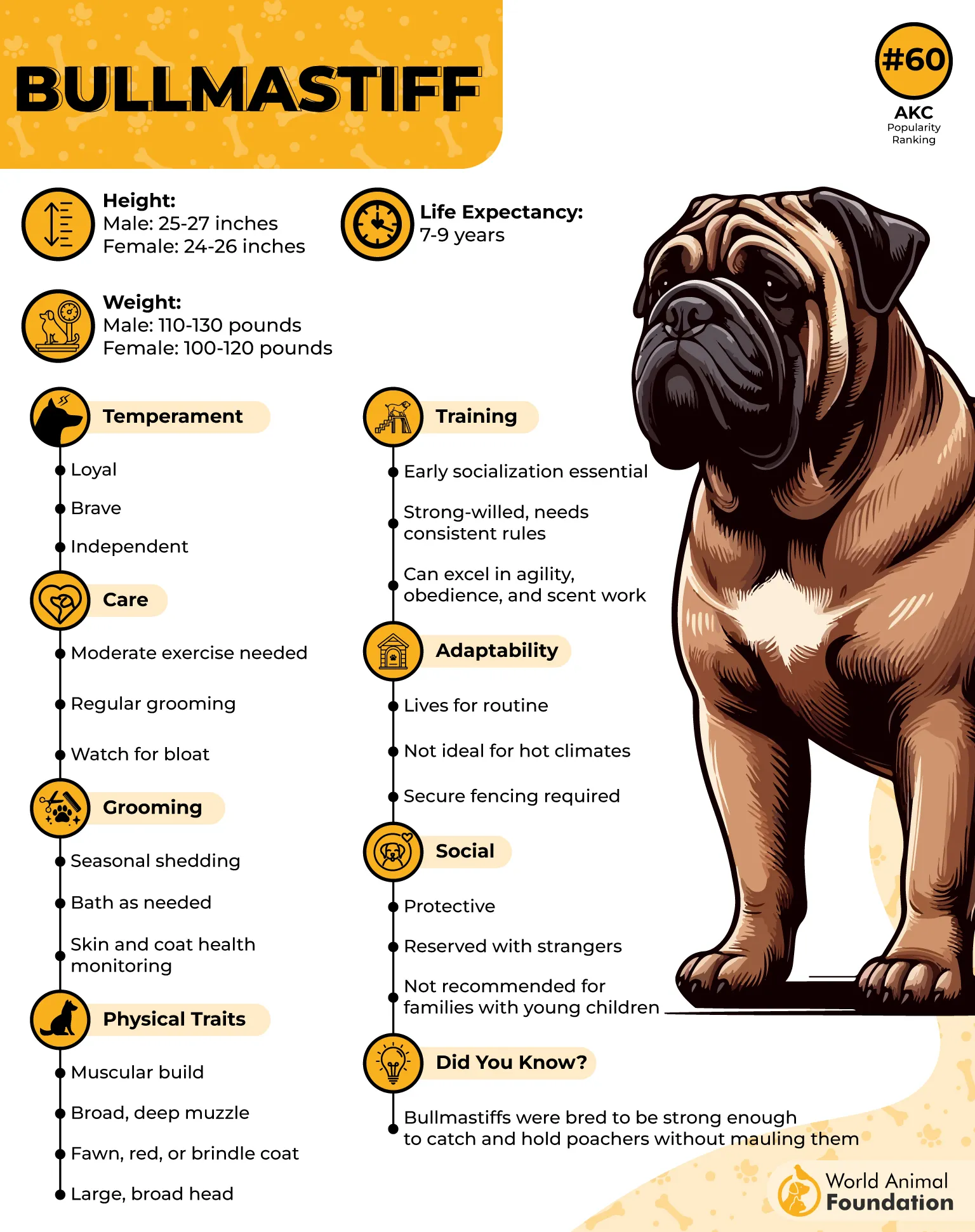
Unique Traits of the Bullmastiff
Known as the “silent watchdog” due to its tendency to rely on presence rather than constant barking.
Despite being a huge dog, it is surprisingly gentle with familiar people.
Has a short coat that’s easy to maintain compared to heavier furry breeds.
Originally bred as a gamekeeper’s dog in England to guard estates against poachers.
Displays a calm demeanor but is quick to act if it senses a threat.
Thrives on consistent training to channel its strong will and intelligence.
|
Trait |
Description |
|---|---|
|
Temperament |
Calm, confident, protective, naturally wary of strangers |
|
Coat & Grooming |
Short, low-maintenance coat |
|
Exercise Needs |
Moderate; enjoys daily walks but not overly demanding |
|
Training |
Benefits from early socialization and firm, steady guidance |
|
Lifespan |
7–9 years |
|
Unique Advantage |
Acts as a deterrent through presence rather than aggression |
2. Belgian Malinois
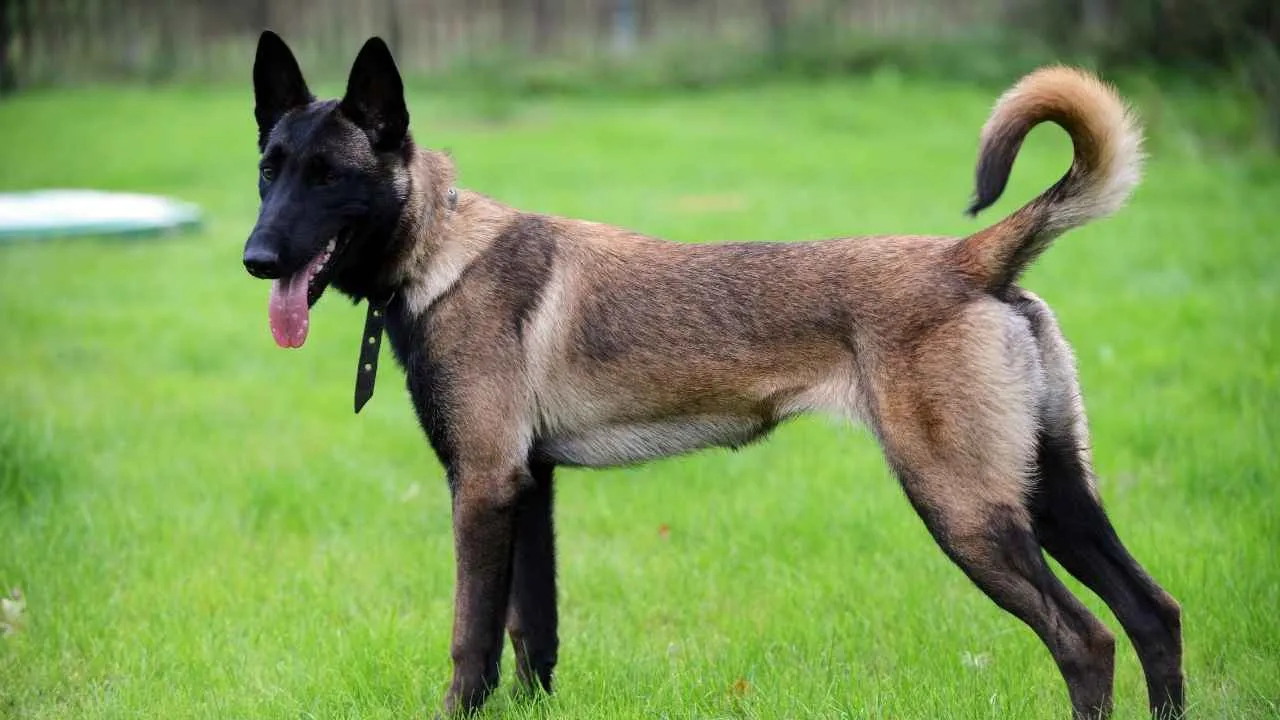
For shelter staff balancing security with compassion, the Belgian Malinois earns its place among the best guard dog breeds for animal shelter staff. According to Omlet, this breed is known for its intelligence, discipline, and ability to stay alert in unpredictable settings.
In environments where other animals may behave unpredictably, a Malinois brings structure and reassurance, responding swiftly when needed while remaining focused on its handler.
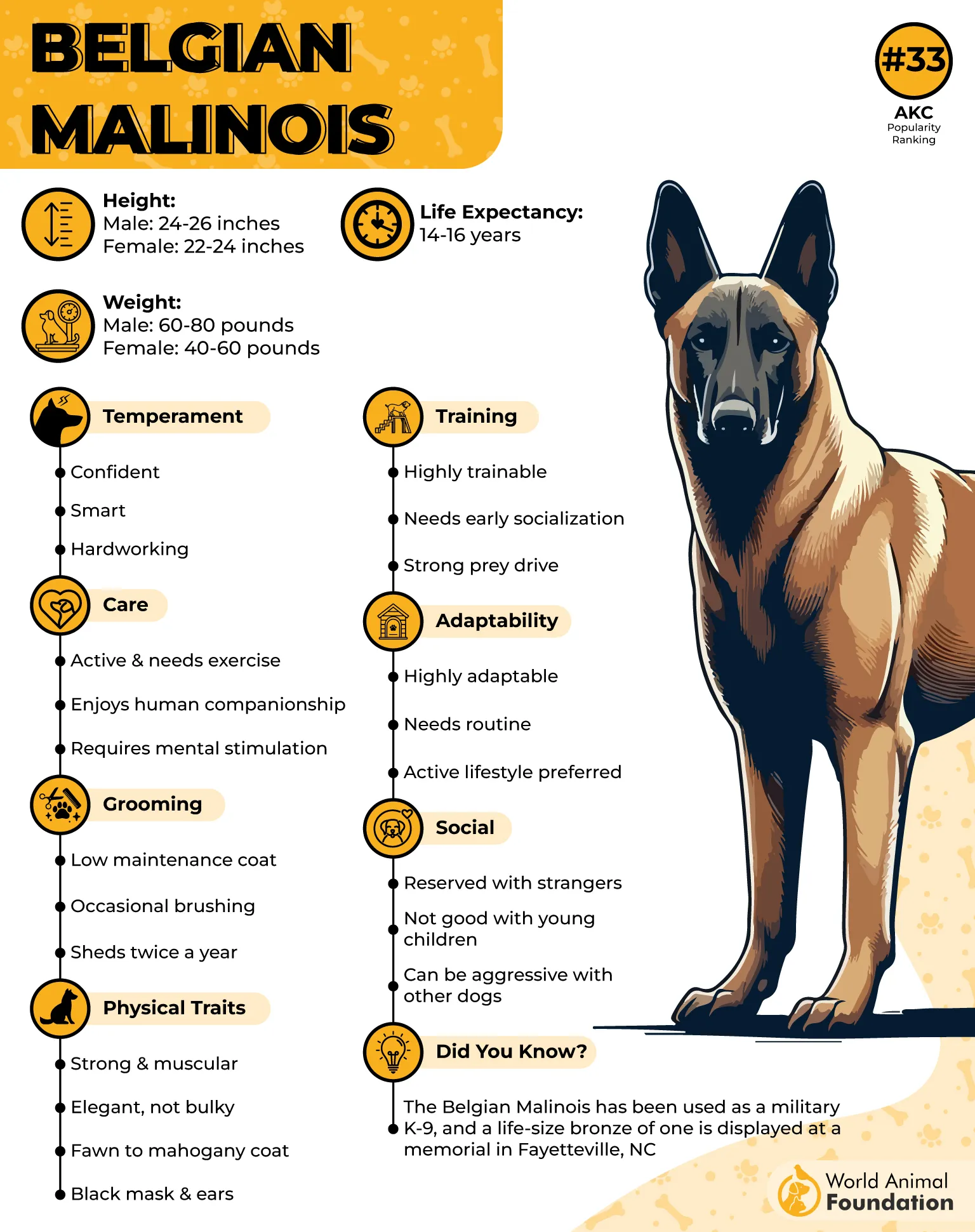
Unique Traits of the Belgian Malinois
Highly intelligent and often ranked among the smartest dog breeds.
Naturally protective and can be one of the most protective guard dog choices with the right handling.
Agile and athletic, excelling in dog sports and working roles.
Bred as a herding dog, it has sharp instincts and a strong drive.
Requires mental stimulation and daily activity to stay balanced.
Shows loyalty to its family but remains cautious around strangers.
Best suited for handlers who can commit to constant training and guidance.
|
Trait |
Description |
|---|---|
|
Temperament |
Energetic, alert, loyal, naturally wary of strangers |
|
Coat & Grooming |
Short coat, easy to maintain |
|
Exercise Needs |
Very high; thrives on running, agility, and active work |
|
Training |
Needs proper training, structure, and strong leadership |
|
Lifespan |
12–14 years |
|
Unique Advantage |
Exceptional working ability and sharp protective instincts |
3. Doberman Pinscher
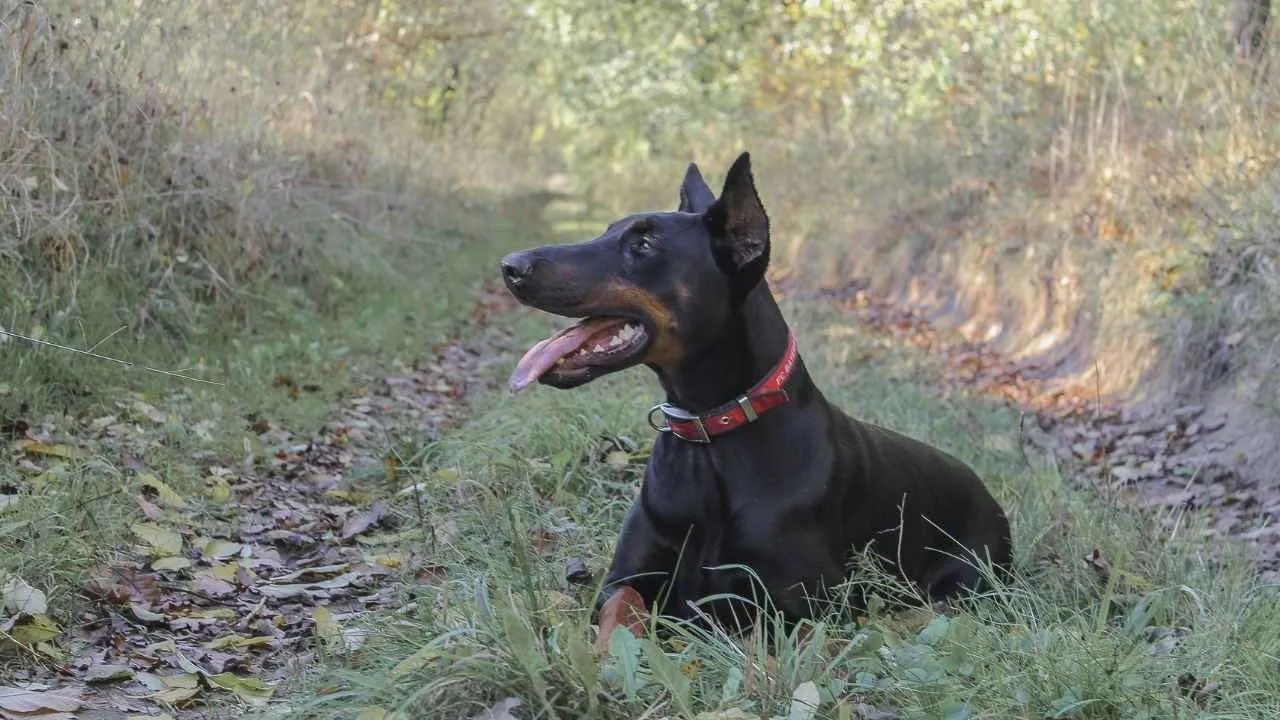
Among the best guard dog breeds for animal shelter staff, the Doberman Pinscher stands out as a sharp, reliable partner. Known for its alertness and quick response, this breed adapts well to structured environments where safety and discipline are priorities.
Whether moving between kennels or monitoring interactions with other animals, a Doberman acts almost like a bodyguard dog, blending strength with loyalty and controlled energy.
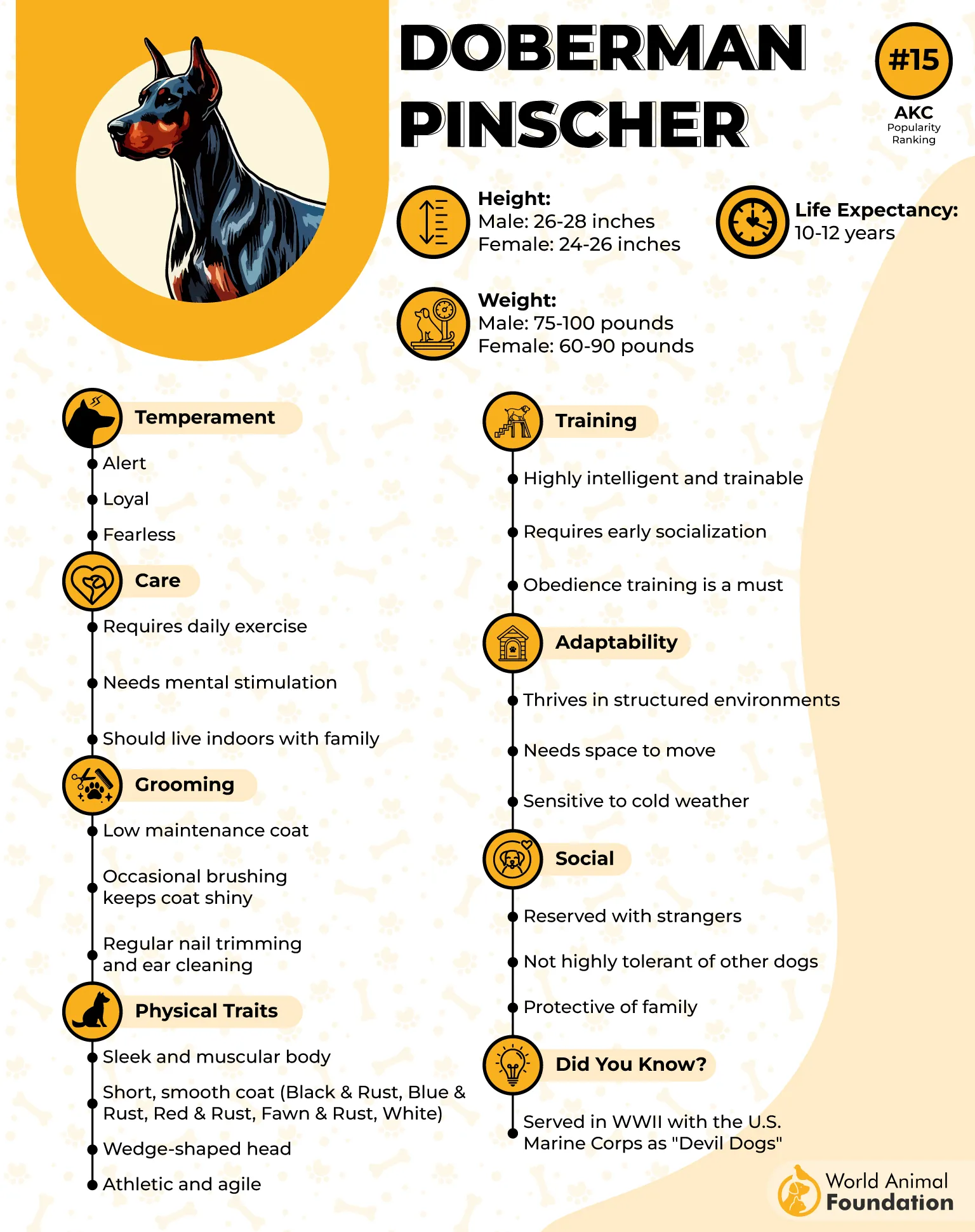
Unique Traits of the Doberman Pinscher
Recognized as one of the best natural guard dogs due to its instinctive vigilance.
Intelligent and highly trainable, making it a strong candidate for obedience work.
They have an athletic build, making them fast and agile when needed.
It can also be a devoted family pet with proper socialization.
Protective instincts make it a dependable choice in uncertain situations.
Requires daily exercise and mental engagement to prevent restlessness.
Incredibly loyal to its handler, often forming strong bonds.
|
Trait |
Description |
|---|---|
|
Temperament |
Alert, loyal, protective, intelligent |
|
Coat & Grooming |
Short, smooth coat; minimal grooming needs |
|
Exercise Needs |
High; thrives on running, agility, and structured activity |
|
Training |
Benefits from obedience training and early socialization |
|
Lifespan |
10–13 years |
|
Unique Advantage |
Combines speed, intelligence, and loyalty for both family and work roles |
4. Rottweiler
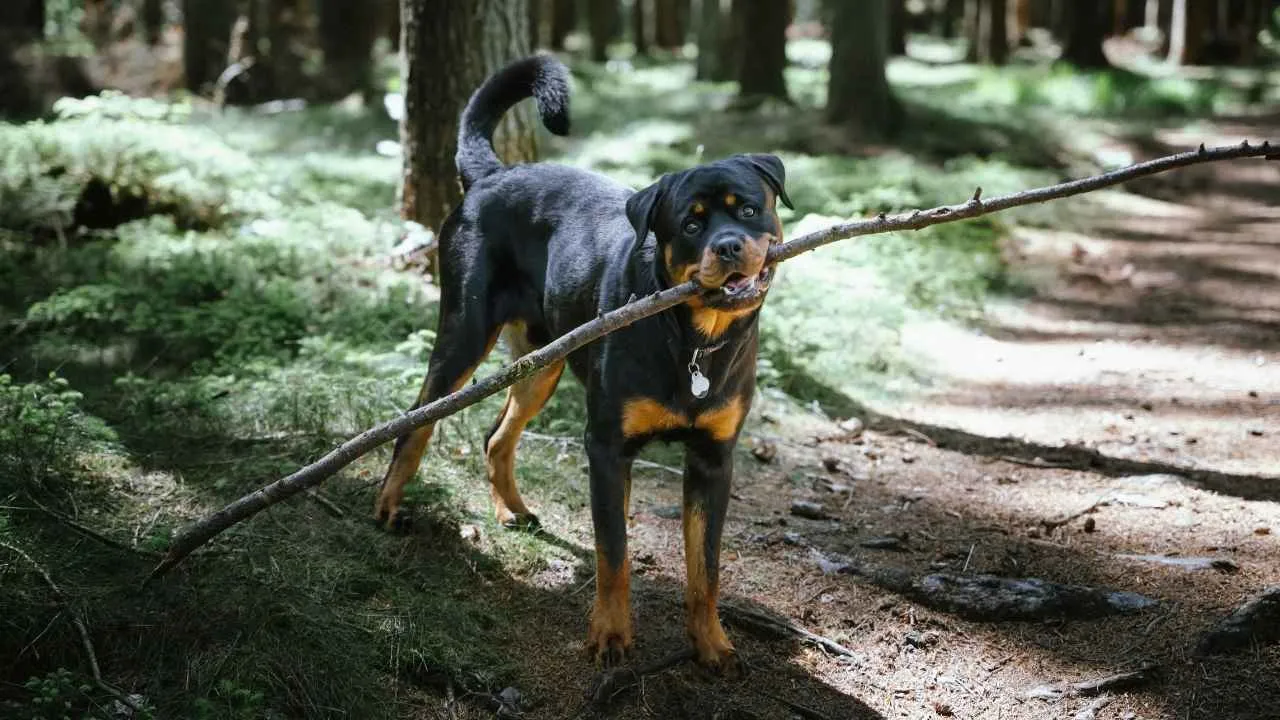
In the dynamic environment of animal shelters, Rottweilers are often counted among the best guard dog breeds for animal shelter staff. With a strong, confident presence, they provide a sense of security without being overly aggressive.
Their balanced temperament allows staff to rely on them for safety while still interacting safely with other animals. When properly socialized, Rottweilers can seamlessly combine vigilance with companionship, showing that they can be both loving family pets and protective allies.
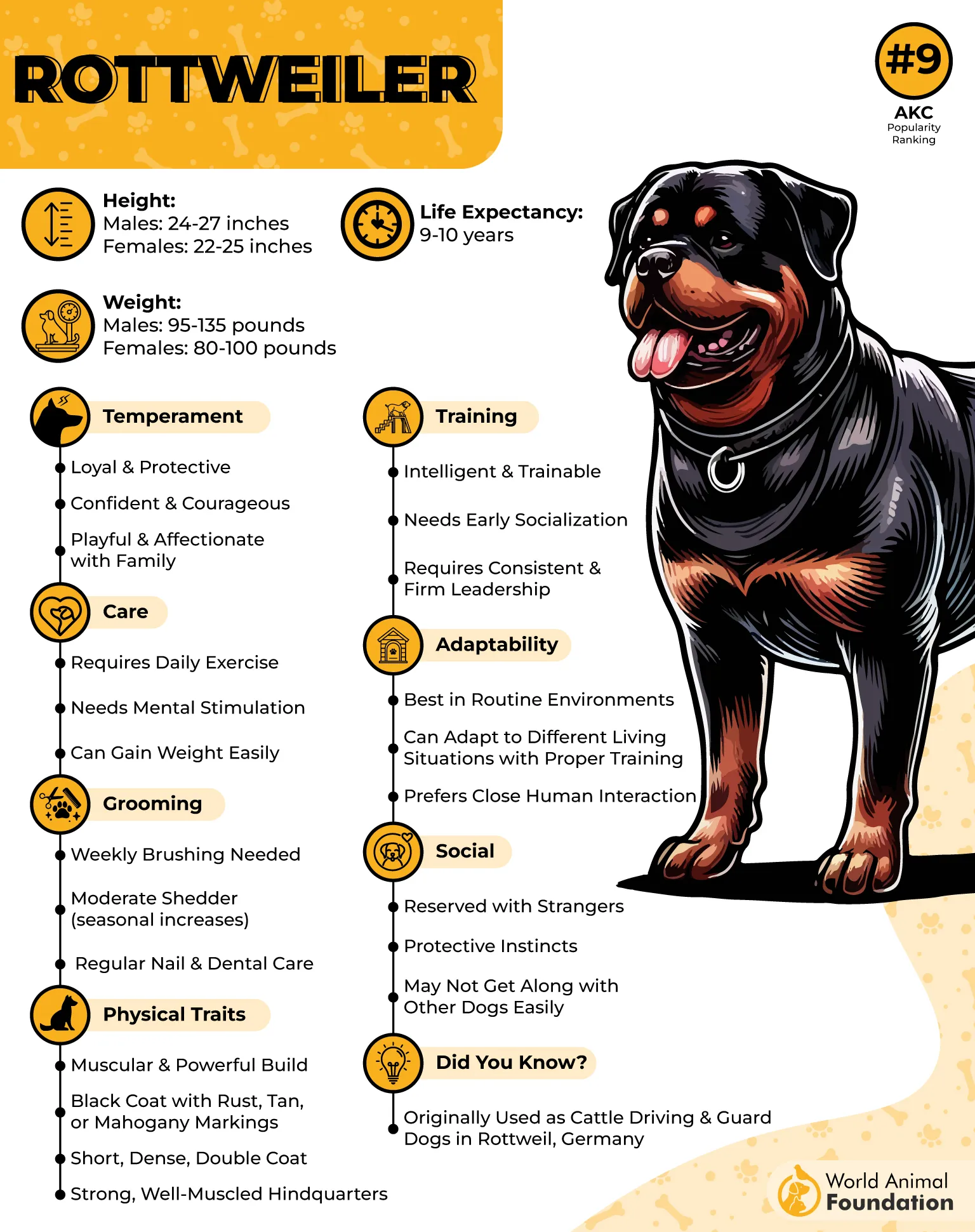
Unique Traits of the Rottweiler
Renowned as excellent guard dogs, they blend strength, courage, and intelligence.
Benefit greatly from positive reinforcement obedience training, which enhances their natural discipline.
Originally bred to herd livestock and pull carts, giving them both stamina and a work ethic.
Loyal and devoted to their family unit, creating strong bonds.
Requires early socialization to interact well with the dog’s parents and other household pets.
Muscular and large, demanding regular physical activity to maintain health.
Naturally protective instincts make them reliable in unpredictable environments.
|
Trait |
Description |
|---|---|
|
Temperament |
Confident, loyal, protective, intelligent |
|
Coat & Grooming |
Short, dense coat; minimal grooming needed |
|
Exercise Needs |
High; enjoys structured exercise and play |
|
Training |
Responds well to positive reinforcement obedience training |
|
Lifespan |
9–10 years |
|
Unique Advantage |
Combines loyalty, strength, and intelligence for both protection and family |
5. Giant Schnauzer
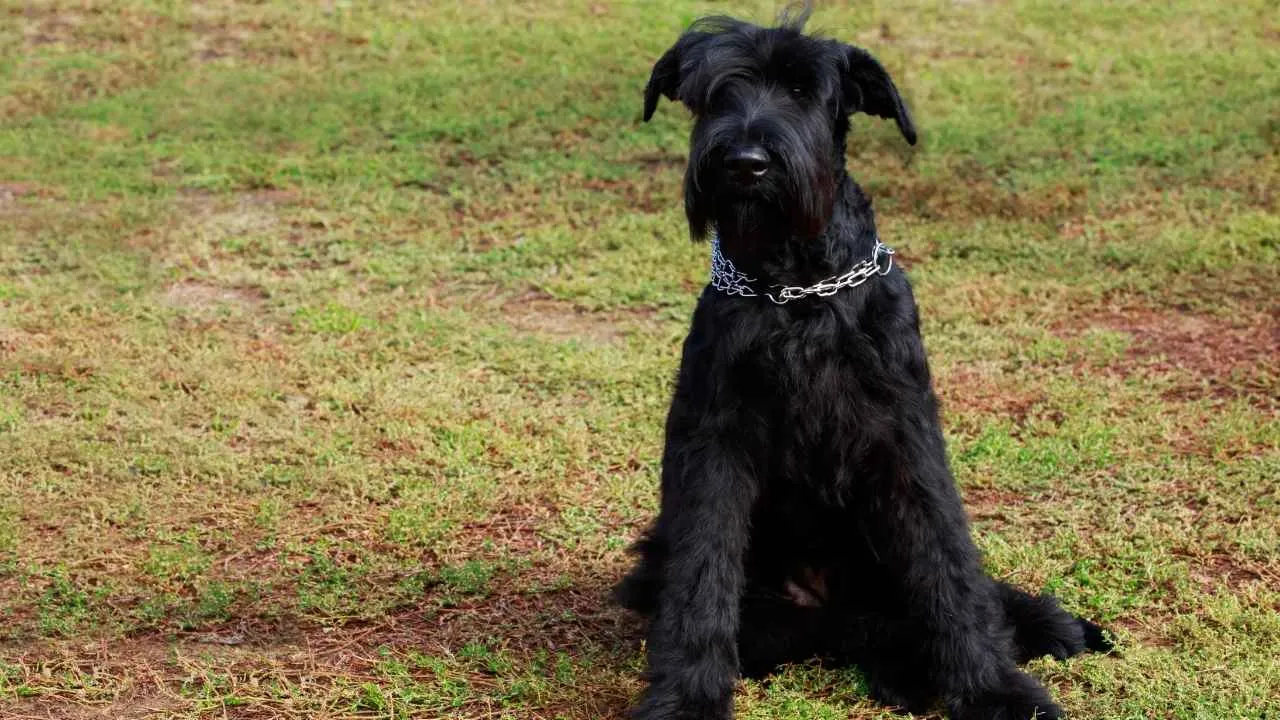
In animal shelters, Giant Schnauzers can serve as one of the best guard dog breeds for animal shelter staff. Their imposing presence and alert nature provide staff with an extra layer of security, especially in high-traffic or unpredictable situations.
While they are vigilant and confident, their intelligence and loyalty make them adaptable to a caring family environment, ensuring that their protective instincts are balanced with social awareness.
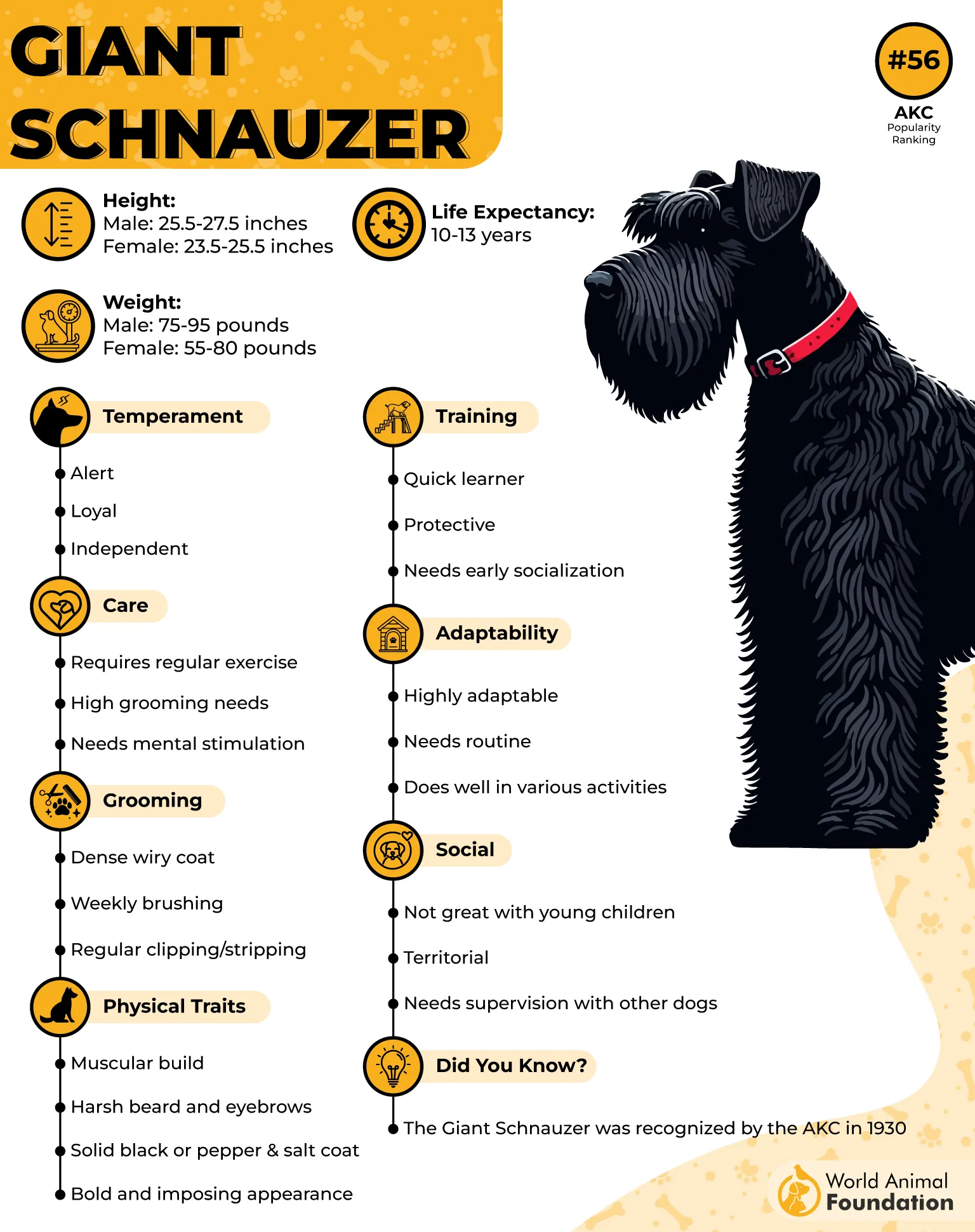
Unique Traits of the Giant Schnauzer
Known as good attack dogs when properly trained, with the ability to respond decisively to threats.
Highly trainable, benefiting from basic obedience training to channel energy and strong instincts.
Originally bred for herding and guarding, combining stamina, strength, and focus.
Muscular, large, and athletic, requiring regular physical and mental activity.
Alert and vigilant, making them a great guard dog for homes and facilities.
Loyal companions who bond deeply with handlers and families.
Intelligent and quick learners, excelling in dog sports and protective roles.
|
Trait |
Description |
|---|---|
|
Temperament |
Confident, loyal, protective, intelligent |
|
Coat & Grooming |
Dense, wiry coat; requires regular grooming |
|
Exercise Needs |
Very high; enjoys structured exercise and mental challenges |
|
Training |
Benefits from basic obedience training and early socialization |
|
Lifespan |
10–12 years |
|
Unique Advantage |
Combines strength, intelligence, and loyalty for versatile protection roles |
6. Cane Corso
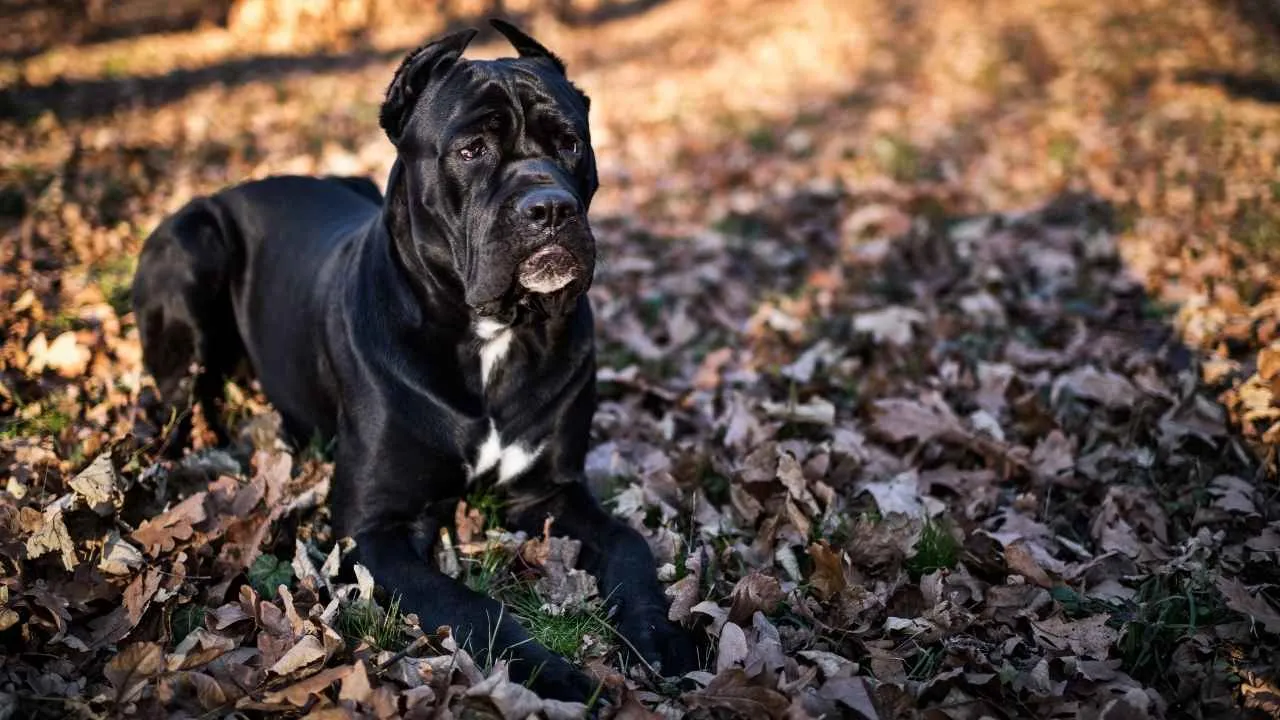
For animal shelter staff seeking a reliable companion, the Cane Corso ranks among the best guard dog breeds for animal shelter staff. With a natural confidence and strong protective nature, this breed can monitor surroundings effectively and respond swiftly to any unusual activity.
Their presence provides staff with peace of mind, while still allowing them to interact safely with family members and other animals under controlled supervision.
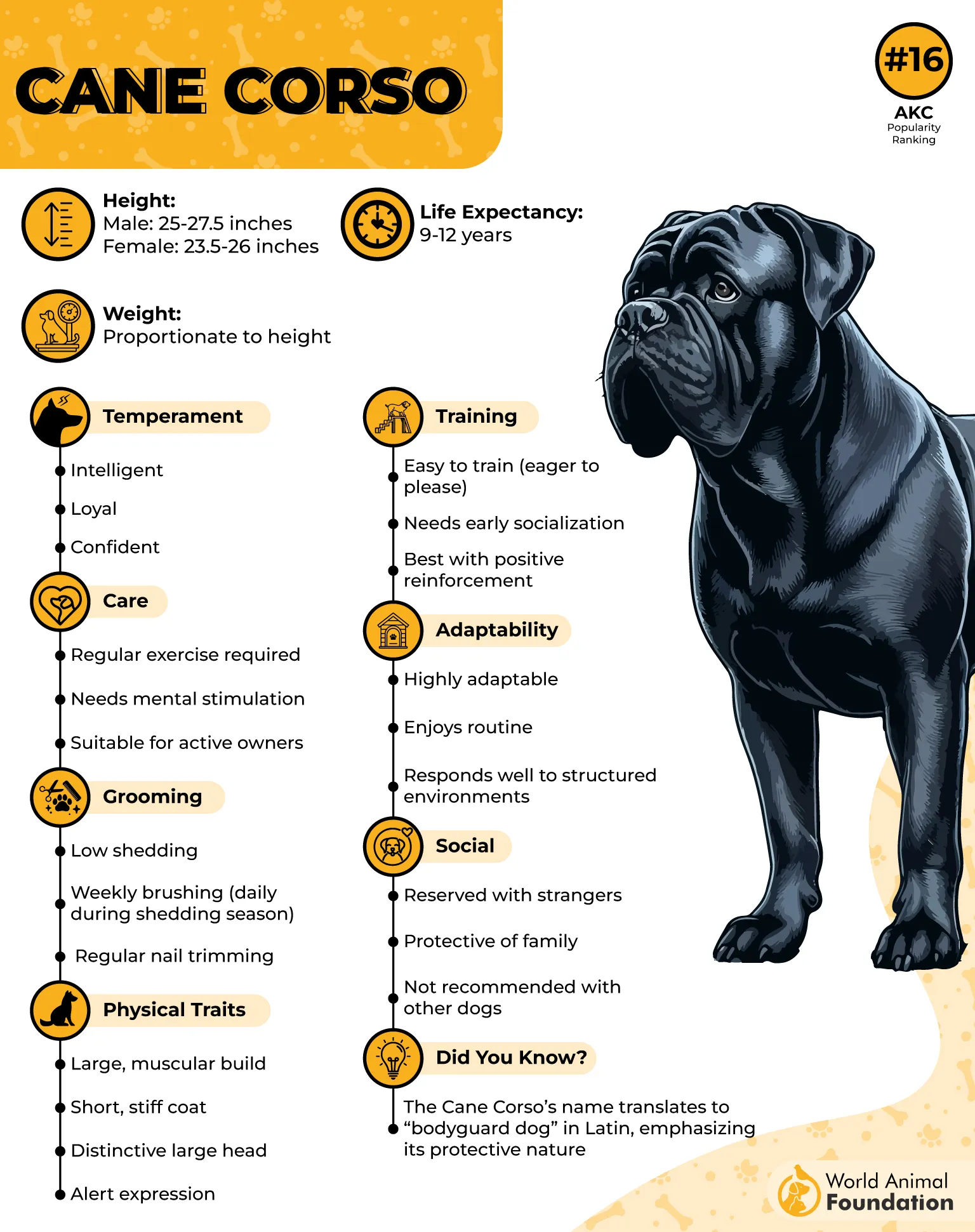
Unique Traits of the Cane Corso
Muscular and powerful, making it a strong deterrent in guard roles.
Intelligent and highly trainable, excelling in structured environments.
Loyal and affectionate with trusted people, forming strong bonds.
Originally bred in Italy as a working and protection dog.
Requires consistent exercise and mental stimulation to remain balanced.
Calm demeanor at home, but alert and decisive when needed.
Adaptable to both indoor family life and active outdoor environments.
|
Trait |
Description |
|---|---|
|
Temperament |
Loyal, intelligent, confident, protective |
|
Coat & Grooming |
Short, dense coat; low maintenance |
|
Exercise Needs |
High; daily walks, play, and structured activity required |
|
Training |
Benefits from early socialization and firm, consistent guidance |
|
Lifespan |
10–12 years |
|
Unique Advantage |
Combines strength, intelligence, and loyalty for versatile protection roles |
7. German Shepherd

For animal shelter staff, the German Shepherd is often considered one of the best guard dog breeds for animal shelter staff thanks to its intelligence, adaptability, and strong presence. This breed thrives in active environments, providing staff with both vigilance and companionship.
Its natural confidence helps manage interactions with other pets and ensures a safe atmosphere, making it a reliable partner in unpredictable shelter settings.

Unique Traits of the German Shepherd
Highly trainable, excelling in early socialization and structured guidance.
Displays a protective nature toward family members and staff.
Energetic and alert, ideal for tasks requiring mental stimulation.
Originally bred for herding and protection, giving strong working dog instincts.
Can develop a loud bark that deters intruders without aggression.
Intelligent and observant, making them excellent for obedience and specialized training.
Forms deep bonds, becoming loyal companions for consistent handlers.
|
Trait |
Description |
|---|---|
|
Temperament |
Intelligent, loyal, alert, adaptable |
|
Coat & Grooming |
Medium-length double coat; regular brushing needed |
|
Exercise Needs |
High; daily walks, play, training, and mental stimulation |
|
Training |
Benefits from basic obedience training and structured routines |
|
Lifespan |
9–13 years |
|
Unique Advantage |
Combines intelligence, adaptability, and protective instincts for versatile roles |
Conclusion
Selecting the right guard dog for animal shelter staff is about balancing protection with temperament. While breeds differ in size, energy, and training needs, the best choices combine vigilance with a fun-loving and approachable demeanor, creating a safer yet positive environment for both staff and animals.
Many of these breeds, originally bred to guard livestock, carry instincts that translate well to shelter settings, offering watchfulness without unnecessary aggression.
It’s important to remember that any recommendation for a dog’s role in security or daily interaction does not constitute medical advice, and staff should always consider each dog’s health and personality.
Choosing dogs that thrive in a healthy environment and have an affectionate nature ensures they remain balanced and reliable, even in busy or stressful shelters. With thoughtful selection and proper care, these breeds—whether in their middle ages or younger—can become invaluable partners, providing protection, companionship, and peace of mind to shelter teams.


